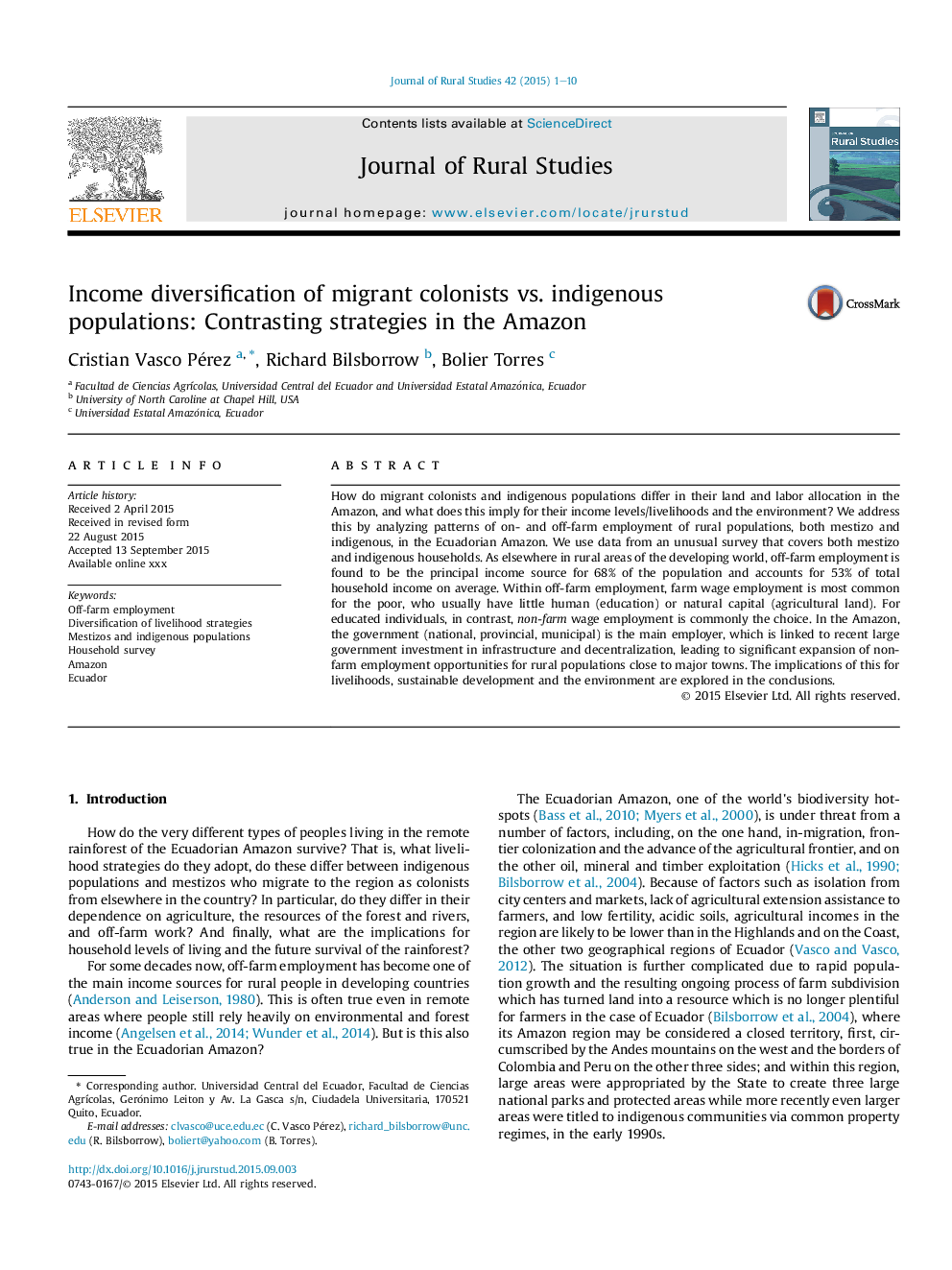| Article ID | Journal | Published Year | Pages | File Type |
|---|---|---|---|---|
| 6545563 | Journal of Rural Studies | 2015 | 10 Pages |
Abstract
How do migrant colonists and indigenous populations differ in their land and labor allocation in the Amazon, and what does this imply for their income levels/livelihoods and the environment? We address this by analyzing patterns of on- and off-farm employment of rural populations, both mestizo and indigenous, in the Ecuadorian Amazon. We use data from an unusual survey that covers both mestizo and indigenous households. As elsewhere in rural areas of the developing world, off-farm employment is found to be the principal income source for 68% of the population and accounts for 53% of total household income on average. Within off-farm employment, farm wage employment is most common for the poor, who usually have little human (education) or natural capital (agricultural land). For educated individuals, in contrast, non-farm wage employment is commonly the choice. In the Amazon, the government (national, provincial, municipal) is the main employer, which is linked to recent large government investment in infrastructure and decentralization, leading to significant expansion of non-farm employment opportunities for rural populations close to major towns. The implications of this for livelihoods, sustainable development and the environment are explored in the conclusions.
Related Topics
Life Sciences
Agricultural and Biological Sciences
Forestry
Authors
Cristian Vasco Pérez, Richard Bilsborrow, Bolier Torres,
